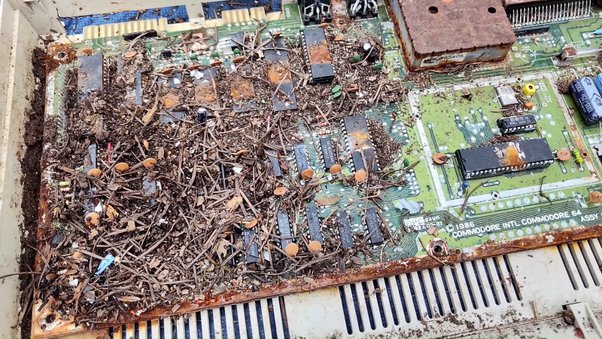I will say it’s almost impossible under ideal storage conditions, parts rust and corrode in the oxygen and moisture, and electrolytic capacitors dry out. Indeed, it’s a common practice these days of people attempting to repair old electronics to begin by “re-capping,” just summarily replacing all the old capacitors with modern equivalents, even before powering up. Few times it has worked and the other time it was a complete disappointment
So odds would be strongly against you.
A YouTuber named Adrian Black acquired an old Commodore 64 that had been left for decades outside … in a field. Lets see in the video below
Most Computer Professionals and Engineers answered regarding Capacitors, loss of memory contents, corrosion and the like, and they are good answers.
But, one more fundamental phenomenon limits the life of any computer, or indeed any semiconductor. For want of a better term, I’m going to call it electro-migration.
When a silicon chip is manufactured, a Dopant is added and the that’s what makes a semiconductor work – layers of “boron, aluminium or gallium” to make P-type material and phosphorus, arsenic, antimony or bismuth are used to dope N-type material.
They are added at elevated temperatures and spread out in known and predictable layers and forms for the PN junctions and the like that in turn form the complexity of modern digital circuits. When the chip is at room temperature, the migration of the Dopant essentially slows right down. Only it doesn’t quite stop.
Over a hundred years, the migration of the Dopant continues to the point where the PN junctions essential for the operation of the chips will simply cease to exist.
And that’s a more fundamental reason as to why a silicon chip computer will have a limited lifespan. A calculation on the lifespan of some of the chips we were using was in the region of 50–75 years.
Manufacturers do use a variety of techniques to slow electro-migration, perhaps some are better, but I’ll bet nobody designs for a 100 year life.









